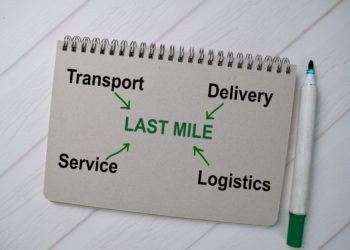The third CHORUS Forum meeting, held last week, is a relatively new entrant into the scholarly communication meeting calendar. The meeting has proven to be a rare opportunity to bring together publishers, researchers, librarians, and research funders. I helped organize and moderated a session during the Forum, on the theme of “Making the Future of Open Research Work.” You can watch my session, which looked at new models for sustainable and robust open access (OA) publishing, along with the rest of the meeting in the video below.
The session focuses on the operationalization of the move to open access and the details of what it takes to experiment with a new business model. The model the community has the most experience with, the individual author paying an article-processing-charge (APC), works really well for some authors, in some subject areas, in some geographies. But it is not a universal solution to making open access work and it creates new inequities as it resolves others.
In order to build a diverse ecosystem of open access publishing models that can support the diverse needs of the many different members of the research community, other models will be needed. But developing a new model is not an easy undertaking. Launching a new business model, figuring out how to make it work, and getting buy-in from the community can be a long and arduous process with a lot of heavy lifting. Our goal in the session was to better understand how the community can come together to build shared infrastructure to make such experimentation easier.

We had four speakers: three publishers who are deeply engaged in building out new business models, and a librarian, who spoke about the “lift” from that side of the equation. Scott Delman gave an overview of the Association for Computing Machinery’s (ACM’s) five-year plan to move to OA through transformative agreements. Sara Rouhi from PLOS explained both their Flat Fee and Community Action Publishing (CAP) approaches. Richard Gallagher discussed the Subscribe-to-Open (S2O) model employed by Annual Reviews and a growing number of publishers. This was followed by MIT librarian Courtney Crummett, who let us know what libraries need to be able to support these experiments. If you want an excellent primer in understanding these models, then the video below will provide it.
Some of the key takeaways for me were found in the commonalities across all of the models. The biggest hurdle that each organization faced in executing its plans was gathering and analyzing author data. As Sara put it, “Data hygiene makes or breaks all of these models.” For PLOS and the ACM, what they’re asking libraries to support is authorship – the model essentially says “this many papers had authors from your institution and what you pay will largely be based on the volume of your output.” But disambiguating author identity, and especially identifying which institutions each represents, remains an enormous problem. While we do have persistent identifiers (PIDs) like ORCID, and the still-under-development ROR, their use is not universal, and we still lack a unifying mechanism to connect the various PIDs into a simple, functional tool to support this type of analysis.
One solution would be requiring authors to accurately identify their host institutions from a controlled vocabulary, but this runs up against most publishers’ desire to streamline the article submission process. There’s a balance to be struck, but probably one that’s going to ask authors to provide more accurate and detailed information.
Usage data is also a challenge. For the S2O model, institutional usage of the journals remains a key selling point in garnering support. But in an OA world, many users will directly access the articles without being on campus or signed-in to their library’s systems. This calls for better mechanisms for distributed usage logging, but also raises some major privacy concerns, as brought to light by my fellow Scholarly Kitchen Chef Lisa Hinchliffe. Librarians have long stood as guardians of patron privacy, but as Lisa notes:
Increasingly libs want ROI data on investments in OA publishing. What they are asking for is reader surveillance — who reads what we fund, how much, etc.? Librns have criticized publishers for this tracking on subscription resources. But, now it seems librns want it on OA?
— Lisa Janicke Hinchliffe (@lisalibrarian) April 23, 2021
The other big common lift involves financial data. As Scott explained, in order to move to an entirely new model, you need a clear understanding of your organization’s finances. There needs to be a sufficient level of granularity and flexibility in one’s financial tracking to allow everything to be recast to the new model (or to be able to analyze multiple models for potential adoption). The financial systems of many publishers are, however, often built to support the current model and may not provide the right information for making the switch. The new business model has to be planned around being sustainable, generating enough revenue to support the services you offer, and to provide some level of surplus to both allow your organization to thrive and to continue to maintain and develop more publishing services. This means a much deeper and more detailed level of accounting and analysis as well as likely building in new practices and systems.
Another common factor was financial transparency — both from the publisher side and the library side. The publishers all suggested that being open with your costs and margins was necessary for getting buy-in from customers, and Courtney confirmed this as important for libraries to understand. I continue to struggle with why this is useful, but a recent conversation with a university librarian helped at least clarify some of the motivation for it.
There are different types of models being proposed for open access — models where the institution remains the customer purchasing a service (APCs, transformative agreements, and CAP/Flat Fee), and others where the university is asked to underwrite the publisher’s operation, as the service will be provided regardless of whether the library opts to pay (S2O, Open Library of Humanities, etc.) For the latter, there is a reasonable argument to be made that the “return” that the library receives on its investment is the knowledge that it is supporting an organization acting in a way that fits with the library’s philosophical and fiduciary goals. To ensure that the project being supported is, in fact, a good one, and not a boondoggle or blatantly inefficient, a look under the hood is justified.
This is not the case for the first type of business model where the library remains a customer. The return the institution receives for its money is the service being sold – authorship services for published papers. Here, the idea that pricing should be based on costs, rather than the value provided, is likely to create perverse incentives and distort the market. PLOS’ CAP model, for example, provides an accounting of the costs incurred by the journal and then tacks on a 10% profit margin. In this model, PLOS has no incentive to make their operations more efficient — if they can come up with new routes to reducing their costs, then their profits drop, and they end up with less money to put toward new developments and future activities.
If two publishers offer the same set of services but one runs their business poorly and overpays suppliers, under this “fixed profit percent” model, the poorly managed business will wind up with more profit than a business that has maximized efficiency and better managed its costs, even if the services supplied to the customer are equivalent. This approach rewards inefficiency — paying more for typesetting would result in higher profits — and creates no incentive to invest in more efficient technologies and processes. We want just the opposite, and a system that actively punishes well-run businesses does not bode well for the future.
The notion of “cost transparency” may be a reaction to the high profits of some commercial publishers (many of which are publicly traded companies and hence have a high degree of transparency already). But the perception of value with regard to publishing (and most other products and services) has little to do with the cost of providing those products and services. Universities and libraries don’t demand to see the full financial details of their other suppliers and don’t need to know the profit margins made by plumbers when they have a clogged drain nor the costs incurred by furniture manufacturers when they purchase a chair. When a researcher uses their grant money to buy a microscope, I know of no funder that requires the manufacturer to send along a list of the cost of each component in the microscope and the amount paid for the labor necessary to assemble it. Why are publishing services so different? It’s not clear why such data is required, nor does there seem to be a clear vision for how it is to be interpreted.
Beyond the question of principle, there seems little practical value in cost transparency, given that there are no standards for such financial reporting, something that remains a gaping hole in the Coalition S financial transparency requirements. Financial reports are complex, and every publisher I’ve encountered has a different approach to putting them together. Each organization has its own philosophy, for example, toward allocation of overheads. Beyond that, different organizations have more or less centralized functions: marketing, technology, finance, project management, and so on (and hence the financials at a journal level are highly subjective as costs can be booked in many different places). I know many presses where journals cross-subsidize other journals – many a successful hybrid journal is propping up OA journals that lose money. Any resulting “cost transparency” reports are essentially meaningless for either comparing costs between publishers or truly understanding the financials of any given publisher. Untangling this accounting would require wholesale recasting of financials. The way to resolve this would be to develop financial reporting standards, so each organization is required to report on the same things in the same manner, but it is likely that this would prove difficult, if not impossible, and also run into potential competition law problems.
Financial reporting aside, moving beyond the APC is essential to the long-term viability of open access, and there remains much experimentation to be done. Working together effectively as a community can accelerate the progress likely to come from such work, and more thought needs to continue to be put into choosing the efforts that really matter.
Discussion
10 Thoughts on "New Open Access Business Models — What’s Needed to Make Them Work?"
Hi David, thanks for sharing this very helpful summary. I agree with 95% of what you say, but in a spirit of debate, I’d like to take issue with your suggestion that publishers are being held to a higher standard of accountability than other suppliers to universities, libraries and public bodies (‘Why are publishing services so different?’).
Let’s take your example of a researcher using their grant money to buy a microscope. There is in fact far more scrutiny applied to this process (at least in UK universities, with which I have the most experience) than you imply. Funding bodies have expressed concerns for years about the level of expenditure on equipment that often goes unused, and the longstanding tendency for each PI or research group to acquire their own instruments for reasons of prestige or simple convenience. There have been various measures adopted to try to improve transparency and efficiency in the equipment market. Many have interesting parallels with publishing.
1. Several years ago, the UK research councils introduced a policy whereby universities were required to ‘match fund’ 50% of equipment costs, with only 50% met from grant funds. The intention was to enforce greater scrutiny by institutions of whether the equipment was really required, and to create additional price sensitivity in the market. Philosophically, this is essentially the same approach as the University of California is now adopting for APCs, with its expectation that authors will use their own research funding to cover the balance above $1,000.
2. In many cases there are dedicated equipment funding calls, to which researchers must apply. There will typically be a cap applied to these calls, based on what the funder considers an ‘appropriate’ price to pay for the equipment. These caps are invariably considered to be ill-thought out and too low by researchers and equipment suppliers alike. The parallels with cOAlition S’ (since rescinded) idea of a price cap on APCs are not hard to see.
3. There have been a number of initiatives designed to promote ‘open access’ to equipment, so that other researchers and industry can access publicly-funded scientific equipment in universities. Huge amounts of effort have gone into cataloguing the equipment in use across UK higher education, and gathering data on its utilisation. This data is used to ensure under-utilised equipment is not replaced or sold on, to inform decisions on the renewal of maintenance contracts, and to ‘encourage’ academic researchers to share equipment via a range of inter-group or inter-institutional ‘loan’ processes.
4. Finally, there are myriad procurement rules which must be followed in the purchase of scientific equipment. Institutions must publish invitations to tender on a public platform, and (depending on the value) are usually required to obtain at least three quotes from different suppliers, and accept the most ‘economically advantageous’ bid – which may or may not be the cheapest. Procurement and finance departments are heavily involved in these exercises, and will frequently undertake due diligence on the suppliers to ensure they are financially stable and can be trusted to deliver and maintain the equipment. All of this is a source of great frustration to academics who tend to know exactly what equipment they need to undertake their research, and resent being forced to jump through so many hoops.
These measures all create additional administrative burdens on institutions and researchers, not to mention suppliers of scientific equipment, who bemoan the perceived interference of funders and institutions in their ability to meet the needs of their end-users, the researchers.
So to come back to your question of ‘Why are publishing services so different?’, the answer at one level is they aren’t. Virtually all areas of public and institutional expenditure are subject to a complex web of procurement and accountability requirements, which often appear heavy-handed and inefficient to the suppliers and end users.
The difference between publishers and other suppliers of products and services, as you point out, is the level of prestige associated with certain journals, and the non-substitutable nature of academic content. Libraries cannot simply issue an ‘invitation to tender for biomedical journals’ and choose the strongest bid, whether it be from Elsevier, Springer Nature, PLOS or whoever, as each publisher’s content is unique. As a result, market forces and competitive pressures are even less effective at setting prices in the publishing market than in others, such as the market for scientific equipment (which, I hasten to add, has competition problems of its own). Decades of year-on-year price increases have progressively undermined the argument that ‘price is synonymous with value’ in the eyes of libraries, even when allowing for the accompanying growth in volume of content. All of this results in funders and libraries looking for other ways to ensure ‘value for money’ in a resource-constrained environment.
Is cost transparency the right solution to this problem? I don’t know, and you are right to highlight the deficiencies of the current approaches. But if the only alternative is to ‘leave it to the market’, this seems to me an unequally unsatisfactory solution. Few, if any, other areas of public spending and procurement are allowed to operate without rigorous scrutiny of their pricing and value for money – why are publishing services so different?
Good points Rob, but all seem well in agreement with what I’ve written — all of the procedures you outline for equipment purchases are focused on value offered, not on costs incurred. Each is meant to ensure that money is spent wisely. At no point are the decisions based on what the supplier’s costs are nor on their profit margin, nor is that information asked for/required. If a researcher wants to buy a microscope and gets equivalent prices from Zeiss and Olympus, the purchasing decision will be based on which microscope will best suit the needs of the researcher and the institution, not on which supplier makes a higher profit margin on the sale. By all means, find better measures for the value provided (difficult in this case because there’s a level of remove from the person receiving the value and the person supplying the money), but costs of the supplier are irrelevant.
Yes I don’t think we’re very far apart, my point was simply that I don’t see that publishers are being singled out for special treatment or somehow held to a higher bar than other suppliers. The peculiar difficulties of fairly assessing the value provided by publishers (and the concern, as Falk notes, that much of the value is added by the scientific community but appropriated by the publisher) just mean the mechanisms designed to assure value for money in other areas of institutional expenditure are less effective in this case, and we are struggling to find any good alternatives. I will be interested to see how the University of California system’s experiment with APC charging plays out – will this yield the desired price sensitivity on the part of authors, and limit demands on the library budget, and will the benefits of this outweigh the administrative complexity and costs involved?
Thanks Rob, your point is a good one. I don’t know the right way to ascertain value here, but I’m not convinced that knowing how much a supplier paid for a particular component of what they’re supplying tells you much about the value you derive from it. As noted in the post, basing prices on costs creates some really unhelpful distortions.
As far as UC, my guess is that for any authors for whom price is a problem (and for whom the library won’t pay the whole APC), we’ll just see them choose to opt out of open access rather than choosing a different but less expensive journal.
I would like to add one more point to Rob’s arguments. What distinguishes the journal market from other markets is the fact that the scientific community provides publishers with part of the production process for free (as authors, editors or peer reviewers) , but receives no compensation for it. And according to economists, there should be no such thing as a free lunch .
More price transparency is certainly desirable, but it seems even more important that the services of the scientific community are taken into account in pricing.
I’m not sure why this is relevant. Should we shun PLOS Medicine because they ask more from a peer reviewer than does Scientific Reports? Pricing obviously already takes into account the work done by the community, otherwise pricing would be massively higher. As an example, if you want to pay peer reviewers, Tim Vines gives some ballpark numbers for how much more that would cost (https://www.sciencemag.org/news/2021/03/450-question-should-journals-pay-peer-reviewers). Is the community going to be happy with massive price increases across the board?
Also worth noting that many editors are well compensated for their work. As an example, see eLife, where Mike Eisen received $112,500 for serving as Editor in Chief in 2019, and Randy Schekman was paid a whopping $219,300 for that role in 2017 https://www2.guidestar.org/profile/45-3588477
Regardless, I still don’t see why this makes a difference to the customer. Is the service received worth the price that is asked?
1) Paying editors is the exception and not the rule. Moreover, elife in particular is a pioneer of cost transparency.
2) I am not arguing that authors, editors or reviewers should be paid directly. My argument is that the services that these groups have provided to publishers for free so far should be deducted from the publishers’ prices in the future, be it APCs or subscriptions.
The difficulty I see is that perhaps the cost of editors and reviewers can still be calculated, but how can the price of an article be determined?
I can’t think of a journal I’ve worked with over the last 20 years that didn’t offer at least some compensation to their editor in chief. But there are certainly many that run on a very tight budget, and they often struggle to attract top editors when competing against commercial publishers who are often more profligate in their willingness to pay editors. And this is a good time to put in a plug for a project we’re working on to benchmark editorial honoraria rates which you can read more about here:
https://mailchi.mp/ce-strategy/the-brief-issue-32
My argument is that the services that these groups have provided to publishers for free so far should be deducted from the publishers’ prices in the future, be it APCs or subscriptions.
What makes you think that the costs of these services isn’t already deducted from publishers’ prices? As noted above, if you want to pay for peer review, you’d add in some $4000 per paper, so I think it’s fair to assume that the APC is already $4000 less than it would be if such labor were paid.
Here’s a hypothetical: an author wants to publish their paper in either eLife or Journal X. The APC is the same, the prestige offered is the same, the level of services offered by both journals is the same. You know that eLife paid its Editor in Chief $230,000, and Journal X did not pay their editor. How should this affect the decision on which journal the author is allowed to publish in?
You should start the publishing program you envision here. See how you do.
After some 20 years of experimenting with OA I am not sure there is a need for OA! Just who is demanding OA? I am not sure. In fact, most articles prior to OA were available for free but with the caveat that the institution paid for access. The cost of subscriptions went up but then again I am not too sure the libraries were good at negotiating which they are now. With the advent of the internet, the reader could do so from their home or dorm room. In the US, state libraries were available to citizens of the state. The library could have simply instituted a system whereby one’s driver’s license number could be used to access the library’s internet. I am sure other countries have universal ID numbers for their citizens but probably do. Those countries that could not afford subscriptions were in many instances given subscriptions for free or at a steeply reduced rate.
But, we find ourselves dealing with a myriad of metals, jewels, and acronyms to describe payment systems and trying to find a universal model for payment by an author who only wants to publish his/her article so that they can either get promoted or another grant!
O, what a tangled web we weave when first we practise to deceive!
Walter Scott



